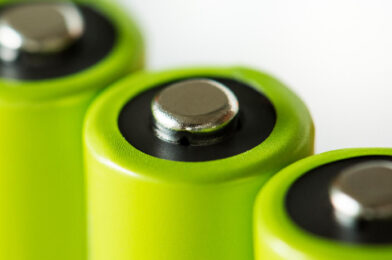Introduction
Imagine a world where your smartphone lasts for weeks on a single charge, electric cars drive for thousands of miles, and renewable energy storage becomes a game-changer in the fight against climate change. Sound like science fiction? Think again! Thanks to groundbreaking advancements in nanotechnology, this future is closer than you might think. In this article, we’ll dive into the exciting realm of nanotech breakthroughs that are supercharging battery technology and explore how these innovations are set to transform our daily lives.
The Nano-Revolution in Battery Tech
1. Graphene: The Wonder Material
Graphene, a single layer of carbon atoms arranged in a honeycomb lattice, is taking the battery world by storm. This incredible material boasts exceptional electrical conductivity and strength, making it a game-changer for battery electrodes. Recent studies have shown that graphene-enhanced batteries can charge up to 5 times faster than traditional lithium-ion batteries and hold up to 45% more energy.
2. Silicon Nanoparticles: Boosting Capacity
Silicon has long been touted as a potential replacement for graphite in battery anodes due to its higher energy storage capacity. However, silicon expands significantly during charging, leading to rapid degradation. Enter silicon nanoparticles! By shrinking silicon down to the nanoscale, researchers have created anodes that can expand and contract without breaking, potentially increasing battery capacity by up to 10 times.
3. Nano-Engineered Electrolytes: Enhancing Safety and Performance
Safety concerns have always plagued battery technology, but nanotech is changing the game. Scientists are developing solid-state electrolytes using nanomaterials that are non-flammable and more stable than liquid electrolytes. These innovations not only improve safety but also allow for higher energy density and faster charging times.
4. Self-Healing Nanocomposites: Extending Battery Life
One of the most exciting developments in battery tech is the creation of self-healing materials. Researchers have developed nanocomposites that can repair microscopic cracks and damage within battery components. This breakthrough could significantly extend battery lifespan, reducing electronic waste and saving consumers money in the long run.
5. Nanowire Batteries: Pushing the Boundaries of Cycle Life
In a groundbreaking study, researchers at the University of California, Irvine, created a nanowire-based battery that could be charged and discharged over 200,000 times without significant degradation. This is a staggering improvement over current lithium-ion batteries, which typically last for 500 to 1,000 charge cycles.
6. Nanostructured Cathodes: Improving Energy Density
Cathode materials play a crucial role in determining a battery’s overall performance. Nanostructured cathodes, such as those made from lithium iron phosphate nanoparticles, offer improved energy density and faster charge/discharge rates. These materials allow for better ion transport and increased surface area, leading to more efficient energy storage.
7. Carbon Nanotubes: Enhancing Conductivity and Strength
Carbon nanotubes are cylindrical molecules of carbon with remarkable properties. When incorporated into battery electrodes, they create a highly conductive network that facilitates faster electron transfer. This results in batteries with improved power output and faster charging capabilities. Additionally, the strength of carbon nanotubes helps maintain the structural integrity of electrodes during repeated charging cycles.
Frequently Asked Questions
Q: How soon will these nanotech breakthroughs be available in consumer products?
A: While some nanotech innovations are already making their way into commercial products, others are still in the research and development phase. Expect to see more widespread adoption in the next 3-5 years as manufacturing processes are scaled up and optimized.
Q: Are nanotech-enhanced batteries safe for everyday use?
A: Safety is a top priority in battery development. Many nanotech innovations, such as solid-state electrolytes, actually improve battery safety. However, as with any new technology, rigorous testing and safety protocols will be implemented before these batteries reach consumers.
Q: Will nanotech batteries be more expensive than current options?
A: Initially, some nanotech-enhanced batteries may come at a premium. However, as production scales up and becomes more efficient, prices are expected to decrease. The extended lifespan and improved performance of these batteries may offset higher upfront costs in the long run.
Q: How will nanotech batteries impact electric vehicle range?
A: Nanotech breakthroughs have the potential to significantly increase electric vehicle range. With improvements in energy density and faster charging times, we could see EVs with ranges exceeding 1,000 miles and charging times comparable to refueling a gas-powered car.
Q: What are the environmental implications of nanotech battery production?
A: While nanotech batteries offer improved efficiency and lifespan, which could reduce electronic waste, the production of nanomaterials does raise some environmental concerns. Researchers are actively working on sustainable manufacturing processes and investigating the potential environmental impacts of nanomaterials.
Conclusion
The future of battery technology is incredibly bright, thanks to the revolutionary advancements in nanotechnology. From graphene and silicon nanoparticles to self-healing nanocomposites and carbon nanotubes, these innovations are set to transform the way we store and use energy. As these breakthroughs move from the lab to consumer products, we can look forward to a world of longer-lasting, faster-charging, and more powerful batteries.
The implications of these nanotech breakthroughs extend far beyond just improving our gadgets. They have the potential to accelerate the adoption of renewable energy, revolutionize transportation, and play a crucial role in combating climate change. As we stand on the cusp of this nano-revolution in battery technology, one thing is clear: the future is charged with possibilities.
Stay tuned for more exciting developments in this rapidly evolving field. The next time you reach for your smartphone or hop into an electric car, remember that a tiny world of nanotech innovations is working hard to keep you powered up and moving forward.
